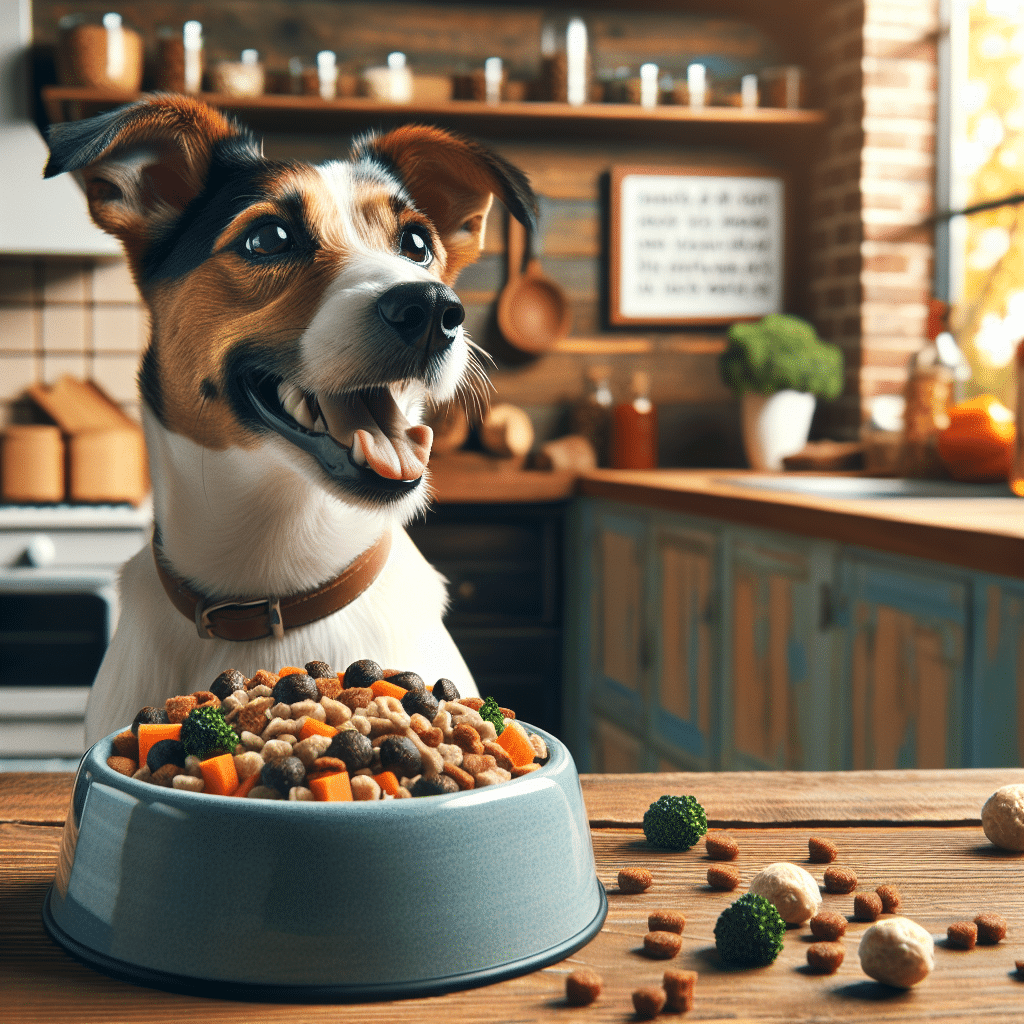Understanding Hypoallergenic Diets for Dogs
Hypoallergenic diets are specifically designed to reduce the risk of allergic reactions in sensitive dogs. Many dogs suffer from food allergies, resulting in gastrointestinal upset, skin irritations, and other health issues. When selecting a diet, it’s essential to focus on ingredients that are less likely to trigger an allergic response.
Common Allergens in Dog Food
Identifying and eliminating common allergens is critical for dogs with sensitive stomachs. Factors often linked to food allergies include:
- Proteins: Beef, chicken, lamb, and dairy are frequent culprits.
- Grains: Wheat, corn, and soy may cause digestive distress in some dogs.
- Additives: Artificial colors, flavors, and preservatives can provoke reactions.
Choosing Ingredients for Hypoallergenic Dog Food
When developing a hypoallergenic diet, base your recipes on novel proteins (those your dog hasn’t eaten before) and easily digestible carbohydrates. Consider:
- Proteins: Fish (like salmon), duck, venison, and rabbit.
- Carbohydrates: Sweet potatoes, peas, and pumpkin.
- Fats: Fish oil or coconut oil, which can promote healthy skin and coat.
- Vegetables: Carrots, green beans, and spinach are nutritious and unlikely to cause issues.
Homemade Dog Food Recipe Guidelines
Crafting hypoallergenic dog food at home can ensure that you control every ingredient. Below are step-by-step recipes specifically tailored for dogs with sensitive stomachs.
Recipe 1: Salmon and Sweet Potato Medley
Ingredients:
- 2 cups of salmon (cooked, deboned)
- 1 cup of sweet potato (mashed)
- ½ cup of green beans (finely chopped)
- 1 tablespoon of flaxseed oil
- ½ cup of peas (fresh or frozen)
Instructions:
- Prepare the Salmon: Cook the salmon by baking it at 350°F (175°C) for 20 minutes or until fully cooked. Remove any bones and skin.
- Cook the Sweet Potatoes: Boil or steam the sweet potatoes until soft, then mash them with a fork.
- Mix Ingredients: In a large bowl, combine the cooked salmon, sweet potatoes, green beans, and peas.
- Add Oil: Drizzle flaxseed oil into the mixture and stir thoroughly for even distribution.
- Serve Fresh: Serve the food fresh or store in an airtight container in the fridge for up to three days.
Recipe 2: Duck and Pumpkin Delight
Ingredients:
- 2 cups of ground duck meat
- 1 cup of canned pumpkin (not pie filling)
- 1 cup of carrots (finely diced)
- ½ cup of blueberries (fresh or frozen)
- 1 tablespoon of olive oil
Instructions:
- Cook the Duck: In a skillet, cook the ground duck meat over medium heat until browned. Ensure it’s thoroughly cooked.
- Prepare Carrots: Boil or steam the diced carrots until soft, about 10 minutes.
- Combine Ingredients: In a mixing bowl, combine the cooked duck, pumpkin, soft carrots, and blueberries.
- Incorporate Oil: Add olive oil to enhance flavor and nutrients, mixing thoroughly.
- Cool and Serve: Allow the meal to cool before serving. Store in the refrigerator for a maximum of five days.
Recipe 3: Venison and Quinoa Bowl
Ingredients:
- 2 cups of ground venison
- 1 cup of cooked quinoa
- ½ cup of spinach (chopped)
- 1 cup of pumpkin (cubed)
- 1 tablespoon of fish oil (optional)
Instructions:
- Cook Venison: Brown the ground venison in a skillet over medium heat, ensuring it’s cooked through.
- Prepare Quinoa: Rinse and cook quinoa according to package instructions.
- Steam Pumpkin: Cube the pumpkin and steam until soft, about 15 minutes. Mash or chop into smaller pieces.
- Mix and Serve: In a bowl, combine ground venison, cooked quinoa, chopped spinach, and pumpkin. Stir in fish oil if desired.
- Serving Suggestions: Serve fresh, refrigerate leftovers for up to four days, or freeze in smaller portions for convenience.
Recipe 4: Rabbit and Brown Rice Feast
Ingredients:
- 2 cups of cooked rabbit (shredded)
- 1 cup of brown rice (cooked)
- 1 cup of spinach (finely chopped)
- ½ cup of carrots (grated)
- 1 tablespoon of coconut oil
Instructions:
- Prepare Rabbit: Use cooked rabbit meat, shredded into fine pieces. It can be boiled or roasted.
- Cook Brown Rice: Prepare brown rice according to package instructions and let cool.
- Combine Ingredients: In a large bowl, mix shredded rabbit meat, cooked brown rice, spinach, and grated carrots.
- Add Coconut Oil: Stir in coconut oil to improve digestibility and coat health.
- Serving Tip: Allow the mixture to cool before serving. Store leftovers in the fridge for three days.
Guidelines for Feeding Hypoallergenic Dog Food
- Portion Control: Be mindful of your dog’s weight; measure servings according to their daily caloric requirement.
- Transition Slowly: Gradually introduce new food to avoid upsetting your dog’s stomach. Mix old and new food over a week.
- Monitor Improvements: Observe your dog for positive changes, including improved digestion and less skin irritation.
- Consult Your Vet: Always consult your veterinarian before starting a new homemade diet to ensure it meets nutritional needs.
Storage Tips for Homemade Dog Food
- Use Airtight Containers: Store homemade food in airtight containers to maximize freshness.
- Freezing for Longevity: Portion meals and freeze for longer storage. Thaw in the fridge before serving.
- Label Containers: Write the date on containers to keep track of freshness.
Nutritional Considerations
Homemade diets must be balanced to provide all necessary nutrients. A blend of proteins, carbohydrates, healthy fats, and vegetables is essential to ensure overall health. Consult a veterinary nutritionist if uncertain about dietary balance, especially concerning vitamins and minerals.
Conclusion
Creating hypoallergenic dog food at home for dogs with sensitive stomachs is beneficial and rewarding. By using wholesome ingredients, pet owners can design nutritious meals tailored to their dog’s specific allergies and sensitivities. Ensure ongoing veterinary consultation to keep your pet healthy and thriving.
